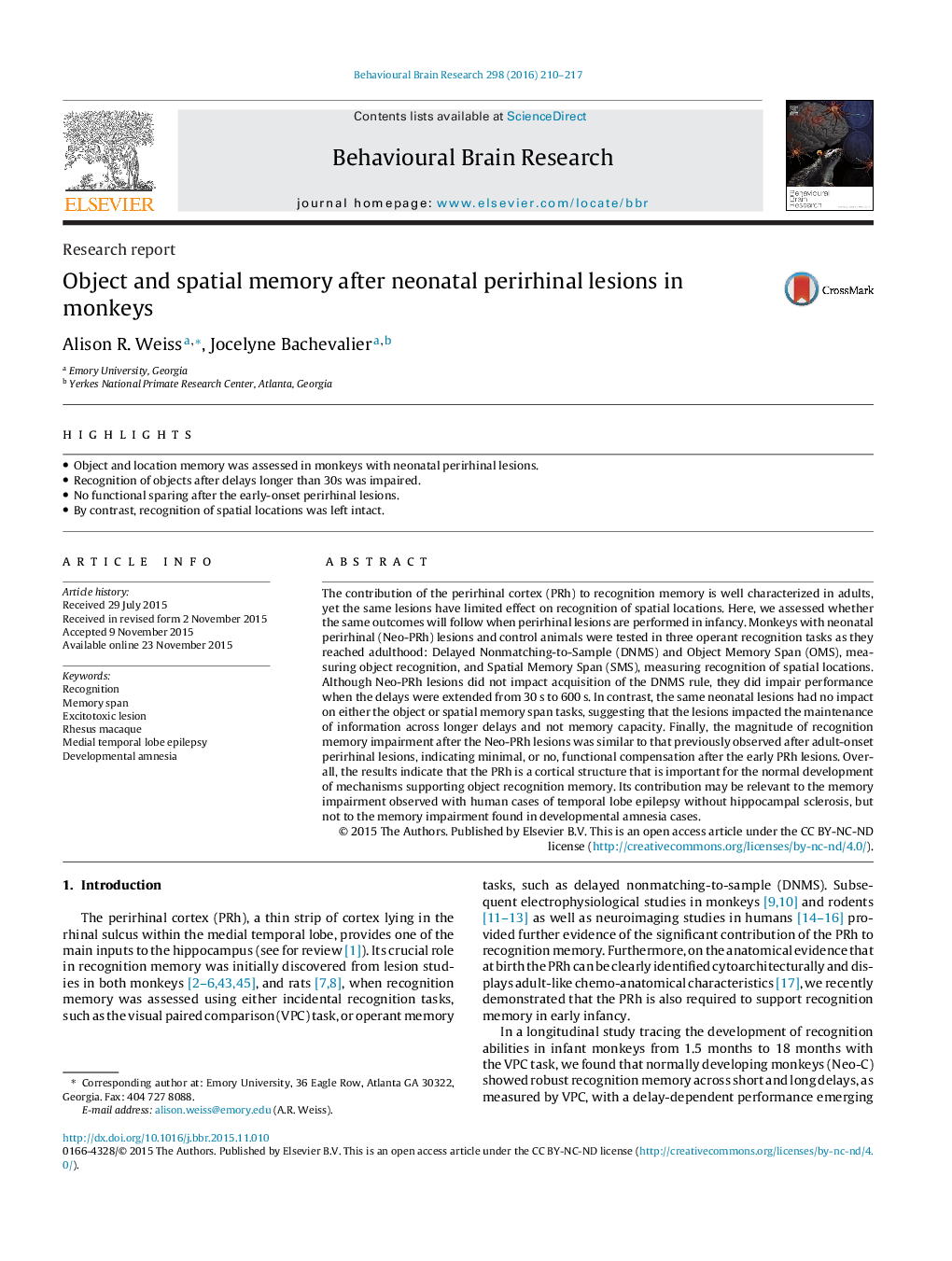| کد مقاله | کد نشریه | سال انتشار | مقاله انگلیسی | نسخه تمام متن |
|---|---|---|---|---|
| 6256297 | 1289914 | 2016 | 8 صفحه PDF | دانلود رایگان |
- Object and location memory was assessed in monkeys with neonatal perirhinal lesions.
- Recognition of objects after delays longer than 30s was impaired.
- No functional sparing after the early-onset perirhinal lesions.
- By contrast, recognition of spatial locations was left intact.
The contribution of the perirhinal cortex (PRh) to recognition memory is well characterized in adults, yet the same lesions have limited effect on recognition of spatial locations. Here, we assessed whether the same outcomes will follow when perirhinal lesions are performed in infancy. Monkeys with neonatal perirhinal (Neo-PRh) lesions and control animals were tested in three operant recognition tasks as they reached adulthood: Delayed Nonmatching-to-Sample (DNMS) and Object Memory Span (OMS), measuring object recognition, and Spatial Memory Span (SMS), measuring recognition of spatial locations. Although Neo-PRh lesions did not impact acquisition of the DNMS rule, they did impair performance when the delays were extended from 30Â s to 600Â s. In contrast, the same neonatal lesions had no impact on either the object or spatial memory span tasks, suggesting that the lesions impacted the maintenance of information across longer delays and not memory capacity. Finally, the magnitude of recognition memory impairment after the Neo-PRh lesions was similar to that previously observed after adult-onset perirhinal lesions, indicating minimal, or no, functional compensation after the early PRh lesions. Overall, the results indicate that the PRh is a cortical structure that is important for the normal development of mechanisms supporting object recognition memory. Its contribution may be relevant to the memory impairment observed with human cases of temporal lobe epilepsy without hippocampal sclerosis, but not to the memory impairment found in developmental amnesia cases.
Journal: Behavioural Brain Research - Volume 298, Part B, 1 February 2016, Pages 210-217
